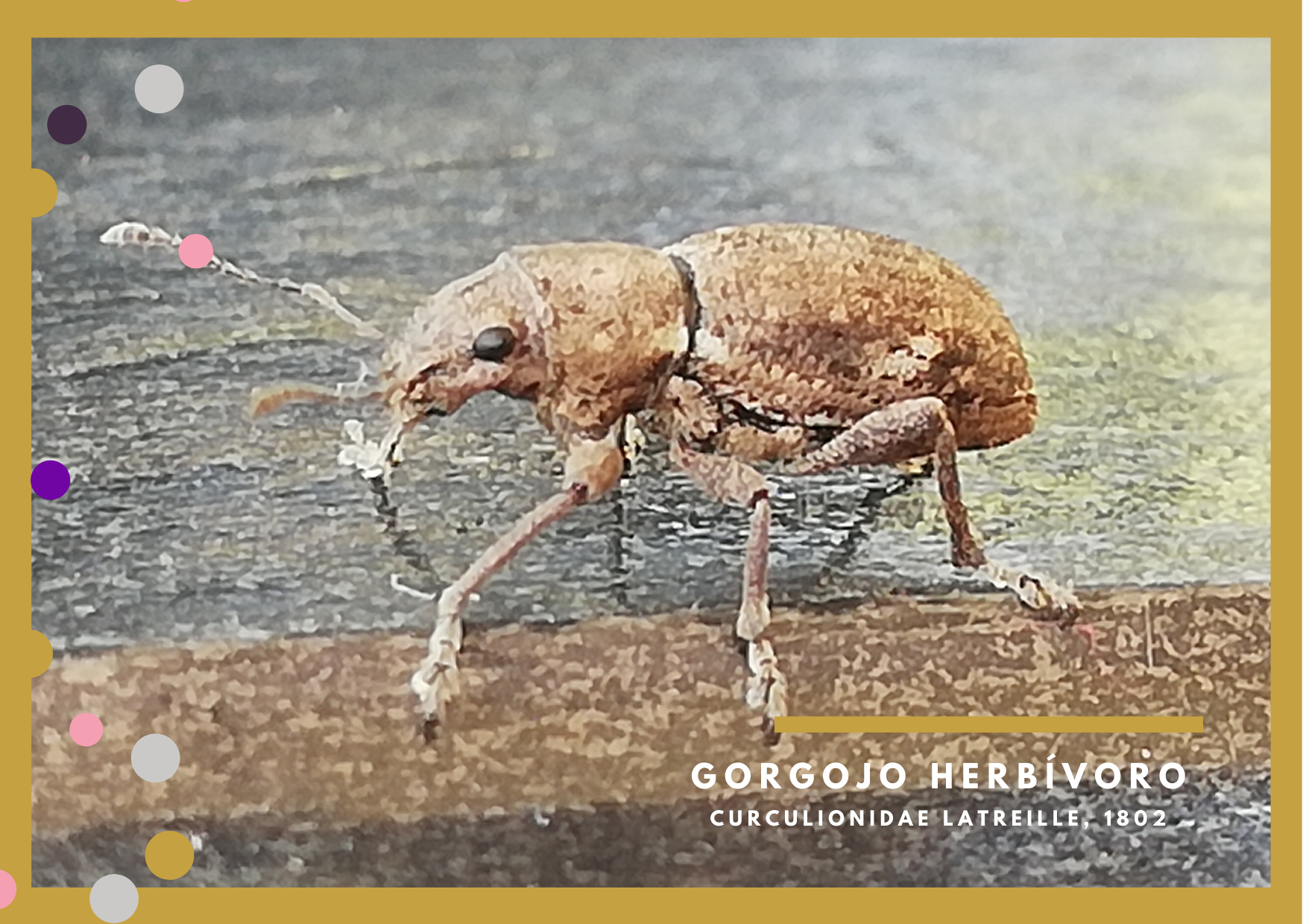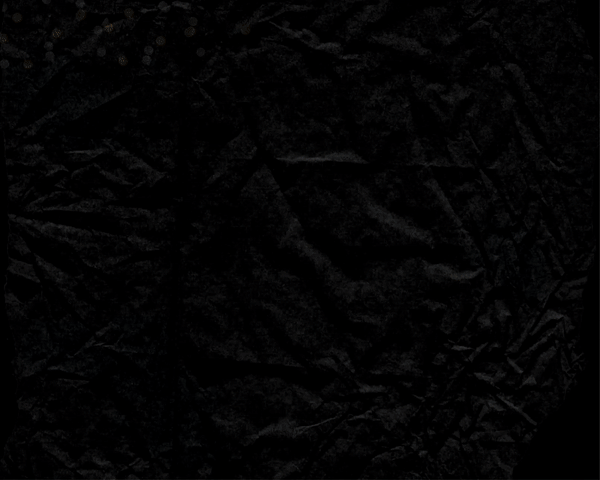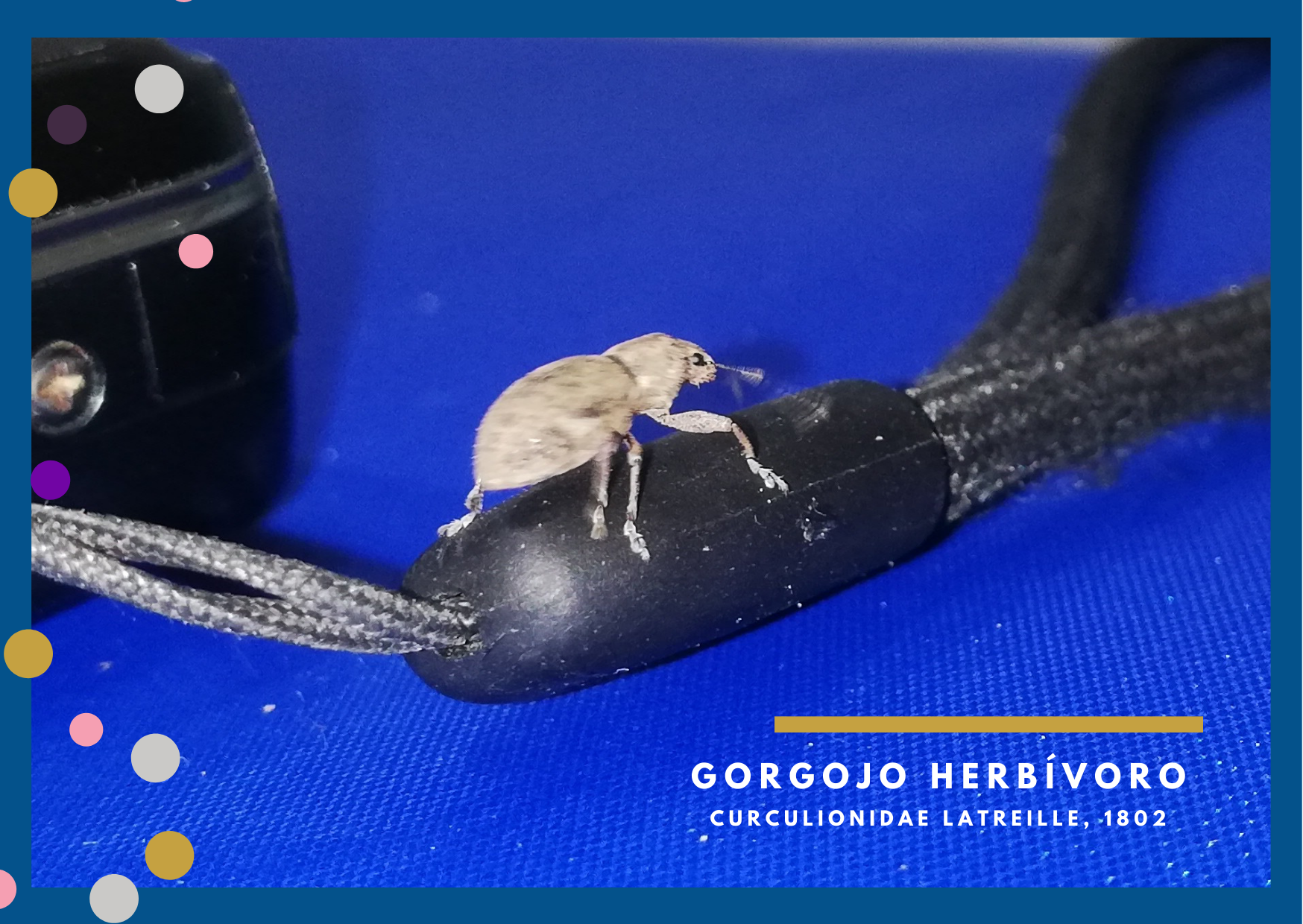Estaba realizando unos ajustes a los cuadernos de contabilidad de un emprendimiento familiar cuando recibí la visita de un insecto volador. Al principio me pareció similar a un pequeño "coco" (los venezolanos sabemos a que nos referimos con este término), cualquier miembro del Orden Coleóptera con un caparazón, denominado élitro, de color beige a marrón claro que debe ser desplegado (abierto) para que puedan desplegarse sus alas interiores (venosas) y alzar el vuelo. Pues bien, este pequeño escarabajo o gorgojo, pertenece a la amplia Familia Curculionidae, con más de 45.000 especies, de allí radica la dificultad para presentar la especie exacta de este artrópodo.






La vida natural y silvestre sigue siendo inexplorado en un alto porcentaje, así que busco información relacionada con las diferentes especies de animales y plantas, procurando en lo posible, que el texto publicado por @aqua.nano sea 100% original, proporcionando un pequeño análisis de la especie que les presento en mi Boletín. Mi intención es atraer la mayor cantidad de lectores en esta comunidad para que conozcan las características básicas de cada familia, género y especie que detallo en este trabajo.

·) Subfamilia Entiminae
·) Género Naupactus
·) Insectos coleópteros
·) Bug Guide

I was making some adjustments to the ledgers of a family business when I received a visit from a flying insect. At first it seemed similar to a small "coconut" (Venezuelans know what we mean by this term), any member of the Order Coleoptera with a shell, called an elytra, beige to light brown in color that must be unfolded (opened) so that its inner wings (veined) can unfold and take flight. Well, this small beetle or weevil belongs to the broad Family Curculionidae, with more than 45,000 species, hence the difficulty in presenting the exact species of this arthropod.


Observing the cover photograph, we see that it has a flat abdomen at its base, but rounded and not elongated as in other species, it has a robust and wide head with protruding compound eyes, a downward curved snout that resembles that of an equid (donkey), with a pair of antennae located on the lower part of its forehead, as it is a specialist herbivore it has strong chewing mouthparts that allow it to feed on plant species (plants, roots and grains).


What I am sure of is that this flying insect belongs to the Superfamily Curculionoidea, but it has a very broad taxonomic classification that encompasses at least 23 Subfamilies. If I consider the morphological description of these species I can go about narrowing down the number of possible candidates that match the specimen I had in my office. By photographic comparison, it may be a member of the Subfamily Entiminae, because it corresponds to the description of a weevil with a short snout or trunk like that of a donkey and also more robust and wide. If I adhere to the classification of the Genus Naupactus, it is noted that this type of arthropod is native to America, from the North (USA) to the South (Argentina), but has spread to various countries of the European continent.

I am struck by its trunk (proboscis) that houses its oral cavity with the ability to chew plant material, since it is short compared to others curculionidae that can be seen in this reference.

Although following my search for the scientific classification of this specimen, I found an insect with similar characteristics that correspond to the Genus Strophosoma, specifically the species Strophosoma melanogrammum, which, despite being native to the European continent, may have reached the American continent as an invasive species or as a stowaway on some commercial exchange vessel between the mentioned continents.
Las imágenes y vídeos son originales de este autor y libero los derechos de copia para que sean usados libremente en cualquier momento y circunstancia. El texto presentado en el Blog de @AQUA.nano es 100% original
La vida natural y silvestre sigue siendo inexplorado en un alto porcentaje, así que busco información relacionada con las diferentes especies de animales y plantas, procurando en lo posible, que el texto publicado por @aqua.nano sea 100% original, proporcionando un pequeño análisis de la especie que les presento en mi Boletín. Mi intención es atraer la mayor cantidad de lectores en esta comunidad para que conozcan las características básicas de cada familia, género y especie que detallo en este trabajo.
Natural and wild life is still unexplored in a high percentage, so I look for information related to the different species of animals and plants, trying as much as possible, that the text published by @aqua.nano is 100% original, providing a small analysis of the species that I present in my Newsletter. My intention is to attract as many readers in this community to know the basic characteristics of each family, genus and species that I detail in this work.


·) Subfamilia Entiminae
·) Género Naupactus
·) Insectos coleópteros
·) Bug Guide


Congratulations @aqua.nano! You have completed the following achievement on the Hive blockchain and have been rewarded with new badge(s):
Your next target is to reach 38000 upvotes.
You can view your badges on your board and compare yourself to others in the Ranking
If you no longer want to receive notifications, reply to this comment with the word
STOPCheck out the last post from @hivebuzz:
Support the HiveBuzz project. Vote for our proposal!
Thanks for your contribution to the STEMsocial community. Feel free to join us on discord to get to know the rest of us!
Please consider delegating to the @stemsocial account (85% of the curation rewards are returned).
You may also include @stemsocial as a beneficiary of the rewards of this post to get a stronger support.
Your content has been voted as a part of Encouragement program. Keep up the good work!
Use Ecency daily to boost your growth on platform!
Support Ecency
Vote for new Proposal
Delegate HP and earn more